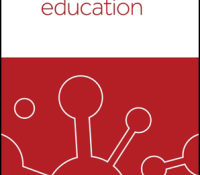tandfonline.com har udgivet en rapport under søgningen “Teacher Education Mathematics”: Link til kilde
Like this:
Like Loading...

tandfonline.com har udgivet en rapport under søgningen “Teacher Education Mathematics”: Abstract Abstract The study aimed at identifying specific giftedness patterns that teachers discriminate against, and for, when nominating gifted students and focused on the identification of implicit theories adopted by teachers on the topics of intelligence, giftedness, and creativity in light of their specialization and experience. The study examined the differences between the effect of summer enrichment programs and school enrichment programs on students’ performance. Profiles for types of gifted students were created, and implicit theory scales and performance assessment scales were implemented. The results showed that regardless of teachers’ specialization and experience, they tended to increasingly nominate students who are intellectually, creatively, and academically gifted. On the other hand, they are strongly biased against students who were gifted in… Continue Reading →
Like this:
Like Loading...
tandfonline.com har udgivet en rapport under søgningen “Teacher Education Mathematics”: ABSTRACT ABSTRACT The primary objective of the current project was to convey authentic science to students in out-of-school student laboratories. High school students have diverse and partially wrong concepts of scientists’ work. To convey more realistic concepts, we developed videos of scientists working on relevant and up to date scientific topics. These videos, covering different work fields of scientists, were integrated into experimental stations as part of the student lab. Half of the participating students performed the experimental part only (n = 117), whereas the other half of students (n = 119) additionally watched the videos. The results of a pre-post comparison show significant increases for previously underestimated work fields, such as artistic (d = 0.94) and social (d = 0.51) aspects, for the video group. Furthermore, the… Continue Reading →
Like this:
Like Loading...
eric.ed.gov har udgivet: The main purposes of this one-year case study are to create learning environments for indigenous students through culture-based mathematics instructional modules, and what teachers’ responds are in two tribes. The researcher leads sixteen in-service teachers and seven pre-service teachers to enter two indigenous tribes- “Cado” and “Jayama,” and design culture-based math modules for indigenous students of tribal elementary schools. Through five stages of guidance, including “preparation and planning,” “exploration and understanding,” “reading and design,” “comment and revision,” and “practice and reflection,” the participants work together to develop seven sets of culture-based math modules in total. Based on observation, interview, and analysis of related documents, it is shown that the implementation through culture-based mathematics instructional modules could motivate students’ interest in learning math, and enhance their initiatives in… Continue Reading →
Like this:
Like Loading...
tandfonline.com har udgivet en rapport under søgningen “Teacher Education Mathematics”: ABSTRACT Formulae display:?Mathematical formulae have been encoded as MathML and are displayed in this HTML version using MathJax in order to improve their display. Uncheck the box to turn MathJax off. This feature requires Javascript. Click on a formula to zoom. ABSTRACT This paper deals with a set of geometrical problems for mathematical problem-solving at different difficulty levels. All of these are presented as national flags and one has to investigate invariant area proportions when changing the locus of any corner of the flag. This dynamic element suggests the usage of dynamical geometry environments. Considering applications in mathematics classes, it allows training students’ ability to find a proof above all in the phases of production of a conjecture and exploration… Continue Reading →
Like this:
Like Loading...



